How to Clean a Wood Cutting Board, Disinfect It, and Lift Pesky Stains

By Hannah Twietmeyer
It may just look like a slab of decorative wood on your countertop, but cutting boards are actually quite complex. They often aren’t listed somewhere between the Instant Pot, KitchenAid mixer, or Keurig when it comes to our favorite products, but the truth? Your cutting board is one of the most important gadgets in your kitchen.
Wood cutting boards are not only great kitchen accents, but they’re also designed to perform hand-in-hand with sharp cutlery every time you need to chop, slice, or julienne — all while being battered with stains from your grocery haul. Tough stuff! A quality wood cutting board isn’t cheap either, which is why it’s so important to take care of the one you have.
To help, we’ve put together a list of things you should be doing to clean, wash, and disinfect your wood cutting boards below.
Photo via Shawna Bailey
Can You Put a Wood Cutting Board in the Dishwasher?
The simple answer is no, you shouldn’t be putting your cutting boards in the dishwasher, wood or not.
The prolonged exposure to heat and water in the dishwasher can warp your cutting board, whether it’s made of plastic, wood, or something else. For wood specifically, the heat can dry it out to the point where it cracks or splits — yikes. There are more effective ways to clean up your cutting board, too, which we’ll get into below, but if you really don’t have time to scrub, look for a “dishwasher safe” label on the product if it’s made of plastic. Still, the bottom line for wood cutting boards: hand wash them.
Can You Clean a Wood Cutting Board with Vinegar?
Of course! Distilled white vinegar is a superstar when it comes to household cleaners. From bathroom appliances to kitchen counters to — that’s right — cutting boards, you can count on vinegar to cut through grease, smells and germs.
Vinegar has natural cleaning properties; it’s composed of acetic acid that helps it break up grime while also working as a disinfectant against certain pathogens like salmonella (via Healthline). Vinegar also acts as a natural deodorizer, which is great news for overused cutting boards.
To use vinegar on your cutting board, all you need to do is dip a clean rag in it or pour it in a spray bottle. Saturate the cutting board with the vinegar, wipe down the surface, rinse with clean water, and dry.
How to Clean a Wood Cutting Board with Lemons
Sometimes, all you need to clean up a cutting board are some fresh lemons and a pinch of salt. This trick is a handy one if you don’t have other cleaning materials on hand. It smells great, too, and will work double in sanitizing and disinfecting your board.
Tools and Materials Needed:
- Salt
- Fresh lemons
- Knife
- Water
- Paper towel
Step 1: Sprinkle Salt
Lay your cutting board on a flat surface. Apply a generous layer of salt to the surface of the wood cutting board. Don’t completely cover it, but give it a healthy sprinkle. This is going to work similarly to an exfoliant.
Step 2: Halve Lemon and Scrub
Grab your lemon from the fruit basket and carefully slice it in half with a knife. Place one half of the lemon face down on the cutting board and begin scrubbing in a circular motion on top of the salt grains. Give the area a thorough scrubbing. The lemon juice works the salt into the wood to help lift stains, with the added bonus of leaving a fresh, citrus scent.
Step 3: Rinse and Dry
Once you’ve scrubbed down your cutting board, rinse everything off with warm water. Use a paper towel to blot off any excess moisture and stand the board up to dry.
You can also use this lemon and salt method after you scrub the cutting board with dish soap to further disinfect it, especially if the cutting board came in contact with raw meat.
How to Disinfect a Wood Cutting Board with Hydrogen Peroxide
You can always disinfect your cutting board with a sponge and soapy water after each use, and you should, especially after dealing with raw meat. You can go even further by disinfecting with hydrogen peroxide, too, according to Food Network. Here’s how.
Tools and Materials Needed:
- 3% hydrogen peroxide
- Sponge
- Water
Step 1: Pour Hydrogen Peroxide
Bacteria, viruses, and other microorganisms are no match for hydrogen peroxide. To disinfect your wood cutting board, start by laying your cutting board flat and pouring 3 percent hydrogen peroxide directly onto the board’s surface, covering the entire thing.
Step 2: Scrub and Soak
Using a clean sponge, scrub the hydrogen peroxide around the board so that its surface is thoroughly saturated. Let it sit for about 10 minutes so the solution effectively works at killing any germs.
Step 3: Rinse and Dry
Rinse your cutting board thoroughly with warm water. Then, blot it with a paper towel and let it air dry completely.
How to Remove Stains from a Wood Cutting Board
Tough, deep stains from colored foods that tend to bleed, like beets or red onions, require deeper cleaning power. With a few everyday household stain fighters you likely have on hand, you’ll be able to lift them out in no time.
Tools and Materials Needed:
- Baking soda
- White vinegar
- Sponge
- Warm water
- Paper towel
Step 1: Apply Baking Soda
Lay your cutting board on a flat surface. Measure out a cup of baking soda and sprinkle it all over the surface of your wood cutting board.
Step 2: Apply Vinegar, Soak and Scrub
Measure out a cup of white vinegar and pour it evenly across the baking soda-covered surface of your cutting board. Let the mixture soak on the board for about 10 minutes. Then, use a sponge and use circular motions to scrub the solution into the wood.
Step 3: Rinse and Dry
Rinse the cutting board thoroughly with water. Make sure to pat dry with a paper towel, and stand it up to air dry.
Photo via Robin Lewis
How to Condition a Wood Cutting Board
Conditioning a wood cutting board is also an important part of maintaining the product for as long as possible. Just like you should wash it regularly, you should also take steps to condition the wood to keep it in good shape after being jabbed by sharp tools every day.
Tools and Materials Needed:
- Mineral oil
- Paper towel
- Clean cloth rag
Step 1: Select a Conditioning Oil
There are a few different conditioners you can use to care for your wood cutting board, but mineral oil is a popular choice. It’s relatively cost effective, easy to find, and safe to use in the kitchen. If you’re looking at other products, just make sure they’re food-grade and safe to use.
Step 2: Clean Cutting Board
Using one of the methods above, give your cutting board a quick scrub (we recommend the lemon and salt method). Getting rid of any stains or stubborn crumbs will give the oil a blank canvas to work with, allowing it to condition the wood deeper. Let the cutting board dry completely before moving on to the next step.
Step 3: Oil Cutting Board and Soak
Carefully dampen a paper towel with the mineral oil (or another safe conditioning product of your choice). Apply the oil to the cutting board’s surface, wiping it on in an even layer. Let the oil soak in for several hours, or even overnight.
Step 4: Wipe Clean
Using a clean, dry rag (or paper towel), wipe off any excess oil. The cutting board shouldn’t be damp or sticky, according to Kitchn, but the finished result should leave the wood hydrated and healthy.
Photo via Or Misgav
More Wood Cutting Board Care Tips
Here are some more care tips to get the ultimate mileage out of your cutting boards:
Avoid Prolonged Moisture
For wood cutting boards, try to keep things as dry as possible. This means blotting the wood thoroughly with a paper towel or rag after each soapy clean, and not leaving the product soaked in the sink. Water that gets trapped in the grains can break down wood and lead to mold, so try to air dry the cutting board standing up and not down on one side.
Wash After Each Use
Staying consistent with how often you wash your cutting board will help prevent the buildup of stains and hopefully add to the product’s longevity. This doesn’t have to be a deep cleanse every time, but you should scrub with warm water, dish soap, and a sponge after every use.
Clean Stains When They’re Fresh
Don’t wait for the stains to set into the wood; they’ll be much harder to lift. Instead, go after them as soon as you’re done chopping.
Condition Monthly
Try to give your cutting board some TLC every few weeks, at least once a month if you can. This will keep the wood hydrated and will help the product perform better.
Have any recommendations you’d like to share with the Hometalk community? Our comments are open — let us know your go-to routines when it comes to taking care of your wood cutting boards!




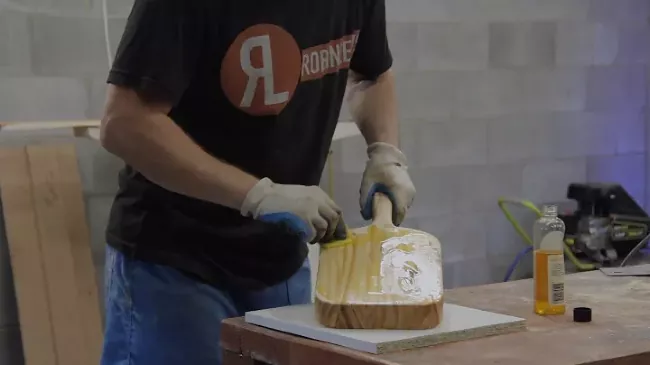

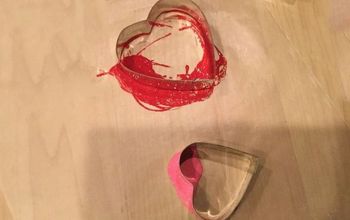
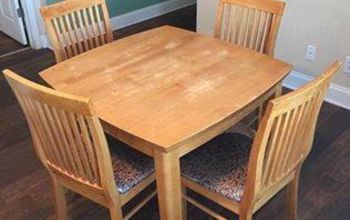


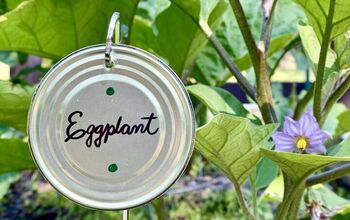
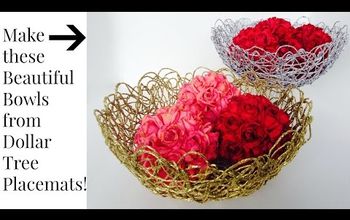



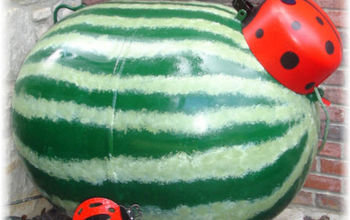

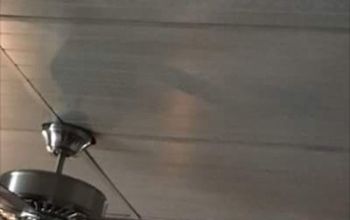
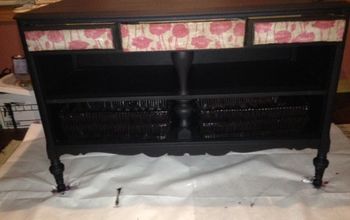

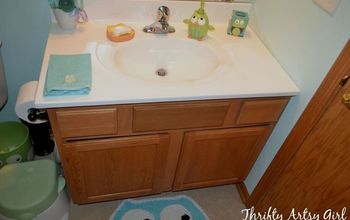


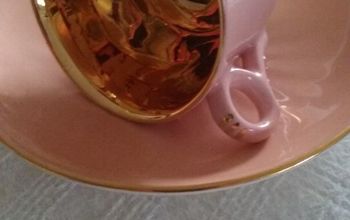

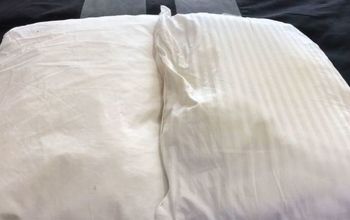
Frequently asked questions
Have a question about this project?